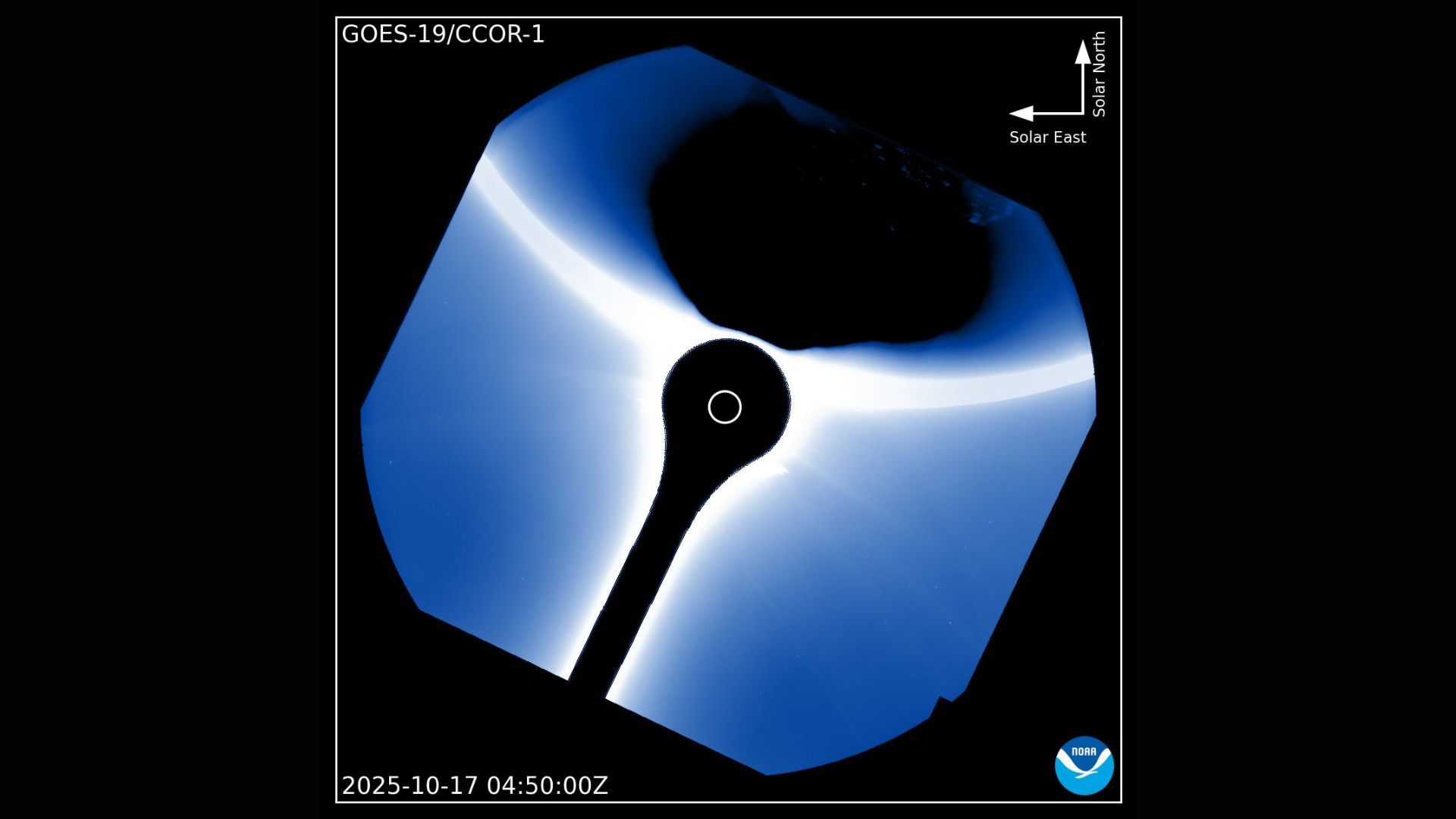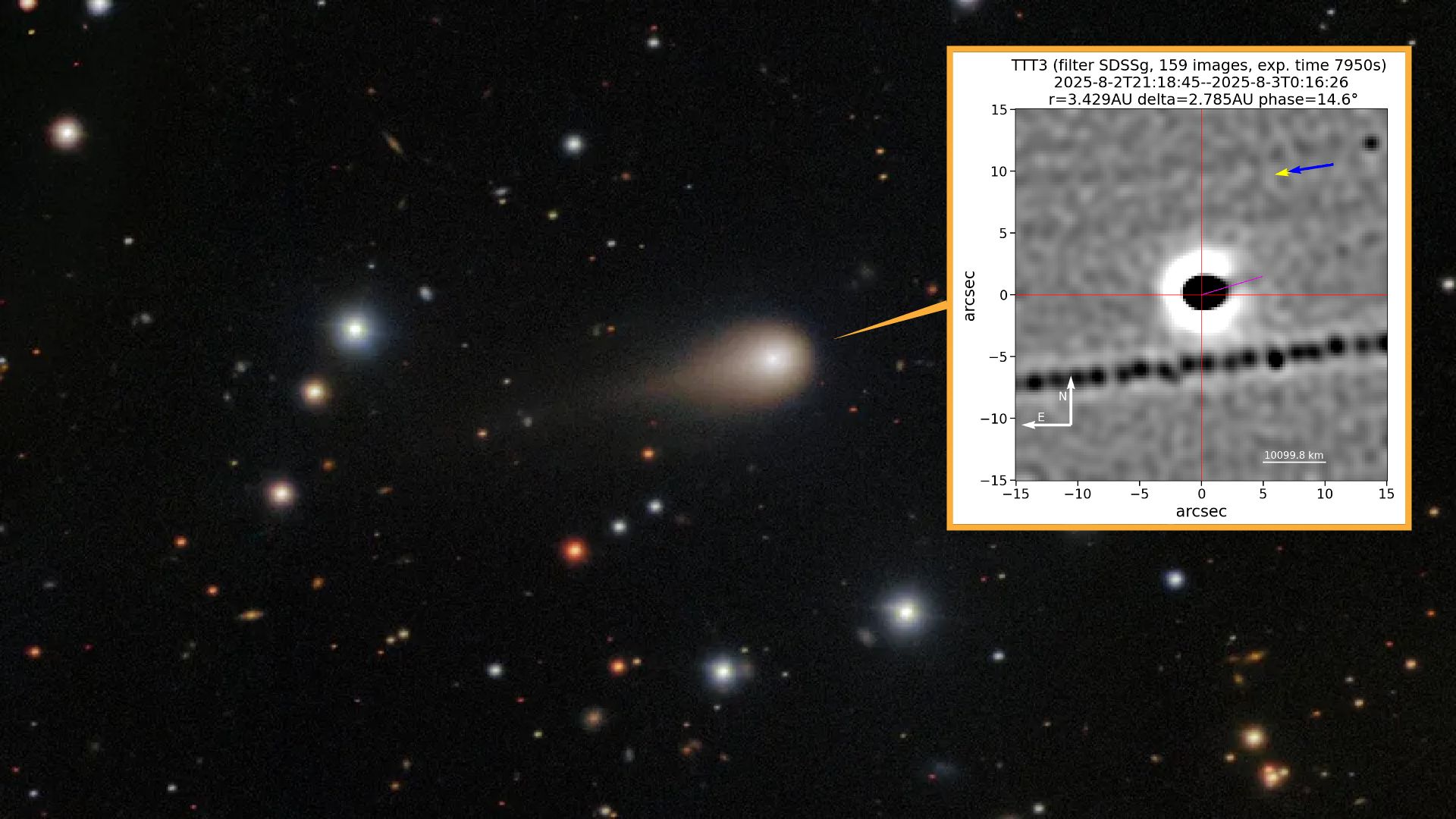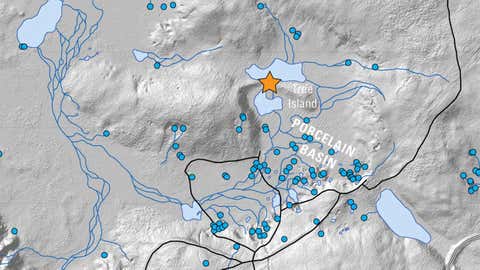

Observant visitors to Yellowstone National Park’s Norris Geyser Basin, the home of the park’s famous Steamboat Geyser and the hottest and most dynamic geyser basin in the park, might notice something new this year: a gaping hole filled with milky blue water.
The hole was discovered by Yellowstone geologists back in April during their first visit to the Norris Basin in 2025. Located just to the west of a patch of vegetation informally known as “Tree Island,” it measures about 13 feet wide and the light blue water is warm, measuring about 109 degrees. It also presented the scientists with a mystery: when did it appear, and how was it created?
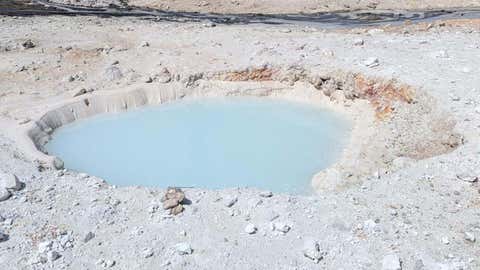

For the geologists, the milky pool was surrounded by clues. It was surrounded by quite a few small (up to one foot in width) rocks that appeared covered in light-gray, fine-grained, sandy mud, providing evidence that a hydrothermal explosion had occurred at some point during the preceding months … but when?
The team was able to use satellite images of the park to narrow down the timing of when the pool had been formed. The satellite imagery showed that as late as December 19, 2024, there were no signs of the hole. However, by January 6, a small depression had become visible on satellite. By the next month, the hole and the water within it were fully established.
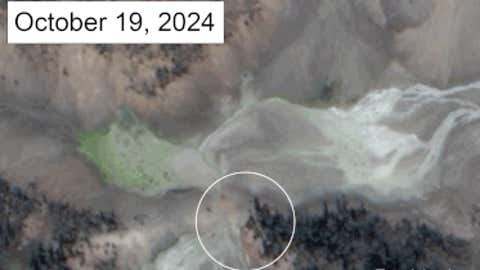

The scientists wanted to know more. Particularly, they wondered if the hydrothermal explosion was associated with an earthquake swarm or another type of seismic event. Luckily, a new monitoring station that uses infrasound (low frequency acoustic energy) to detect hydrothermal activity had been installed in Norris Geyser Basin in 2023. While the team found no strong and unambiguous explosion signals during the time when the satellite imagery indicated the new pool had formed, they did uncover several low-level acoustic signals that came from the direction of the new feature.
Looking at these low-level signals, the scientists were able to determine that, rather than happening all at once, this new pool was created by a gradual process that began on December 25, 2024 (Christmas!). It remains to be seen if the new feature will end up being given an Xmas-related name.
Senior writer Chris DeWeese edits Morning Brief, The Weather Channel’s newsletter.
Source link
